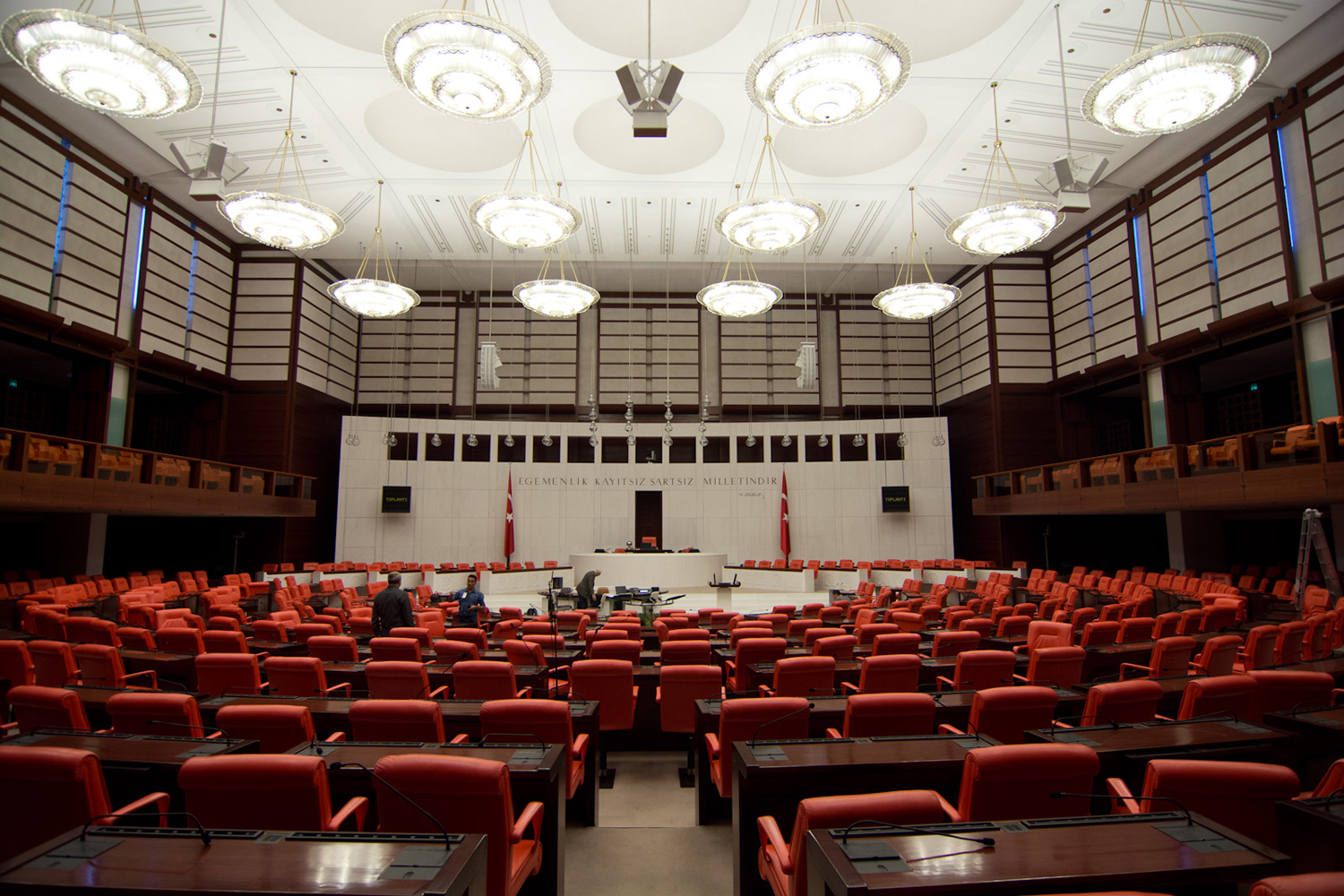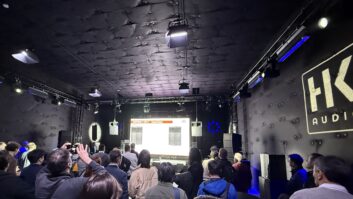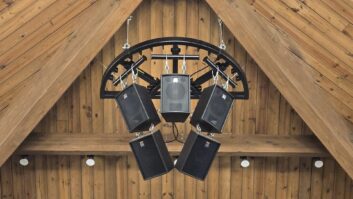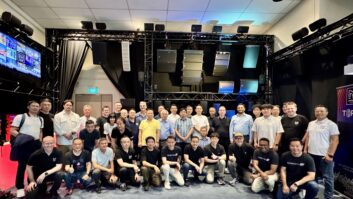
Salzbrenner Stagetec Audio Video Mediensysteme (SSAVM) has played a major role in the installation of a seven-zone, 56-speaker directional sound reinforcement system in the Turkish Parliament (Grand National Assembly) in Ankara.
Supervised by Professor Wolfgang Ahnert of the Berlin-based company Acoustic Design Ahnert (ADA), two Mediagroup teams of two spent the summer of 2014 in Ankara installing the system. With the parliament’s summer recess postponed several times, the Mediagroup team was glad that their collaboration with engineering company Atempo in Ankara, which installed the cable runs, d&b power amplifiers and speaker clusters, went smoothly despite the tight schedule.
SSAVM, the systems integrator of Salzbrenner Stagetec Mediagroup, has implemented directional sound designs by ADA in the past, including for the German House of Representatives in Berlin and the State Parliament in Düsseldorf: only a few parliament buildings currently boast such an advanced system. In both of these venues – and in the new Turkish Parliament project – the system was based on the Nexus gain/delay matrix.
In Ankara, the team installed and connected a Polaris Touch mixing console, an additional Nexus Base Station and a C.A.S. 50600 media control system. One of its functions is to monitor and report the system status to the operator in the control room.
The Grand National Assembly is divided into seven floor zones: three for the podium including the president, the speaker desk, the commission and the ministers, and four for the delegates. “This makes it easier for the delegates to follow debates because they are now able to determine the origin of a question from the floor area,” explained Jochen Schulz, SSAVM’s technical coordinator for the Ankara project.
The Nexus system’s level/delay matrix handles a total of 56 audio output channels that feed dedicated power amplifiers. Connecting the channels to their respective power amplifiers and verifying all connections is a time-consuming exercise, even if there are no cable mix-ups.
Calibrating this enormous amount of channels and speakers is a specialist job and was performed by Professor Ahnert. This is a job that requires more than just the use of measurement microphones; experience, expert ears, and the capability to compromise reasonably are no less important. Based on the concept developed by Enno Finder of ADA and Professor Ahnert’s instructions, the Mediagroup team optimised the frequency response and programmed the level/delay matrix, setting the correct levels and delays for every single speaker, depending on its physical location, individually for each of the seven source zones. This way, the sound is loudest and first perceived from the approximate area of the microphone that a representative uses to ask a question or make a comment. Avoiding phase issues and intelligibility problems becomes a real challenge when using 56 speakers spread all over the hall. Nevertheless, it took Jochen Schulz only two days to get approval from both Professor Ahnert and the parliament’s authorities.
The Atempo team installed and connected an intuitive Salzbrenner Polaris Touch mixing console. Due to long distances within the parliament building two Nexus Base Devices were used to provide all the functions requested by the client – one in the control room, the other under the roof next to the power amplifiers, connected via fibre-optic cabling to keep the cost down and to enable error detection in the control room. The Nexus system was connected to the d&b network to provide connectivity and remote control functionality of the power amplifiers.
Status control and error monitoring of the power amplifiers and speakers is handled by a management routine running inside the C.A.S. 50600 Media Control system. This system is also connected to programmable eight-key remote panels, which allow guides to access the sound system’s basic functions from outside the control room. The overall system provides three modes: off (all power amplifiers on standby), visitor mode (access to basic functions via remote panels) and assembly mode (operated from the control room).
Once the system was up and running, Jochen Schulz and Dominik Stepanek of SSAVM returned to Ankara in October 2014 to provide hands-on training for the 10-strong technical crew. After explaining both the general system overview and each device in detail, another day was spent team working with Enno Finder from ADA to simulate a number of errors, providing valuable troubleshooting tips for the parliament staff.
Salzbrenner Stagetec Audio Video Mediensysteme
Acoustic Design Ahnert
Atempo







